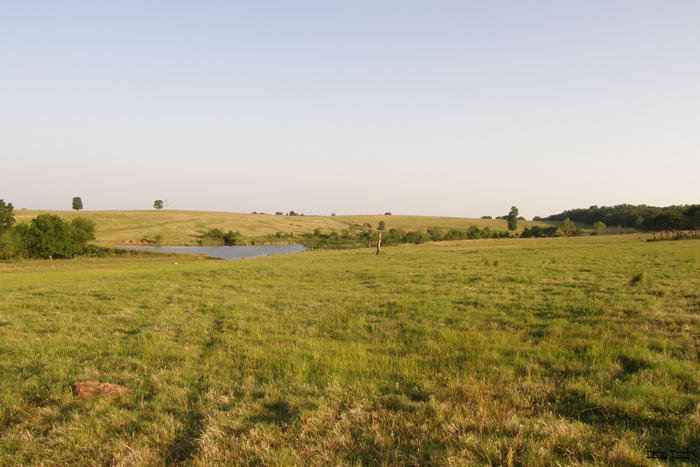
Agricultural News
Noble Foundation Professor Says Flush of Cool-Season Grasses Offers Challenges, Possibilities
Thu, 26 Apr 2012 12:57:32 CDT

Warmer than normal temperatures and above average rainfall are good for agricultural producers, but not necessarily great for their bermudagrass pastures.
The additional rain and increased temperatures following last year's drought have resulted in a flush of cool-season annual grasses, such as ryegrass, growing in bermudagrass pastures that are key for livestock production.
This heavy growth of cool-season annual grasses will out-compete bermudagrass in the spring for moisture, sunlight and nutrients, according to James Rogers, Ph.D., assistant professor. This spring spurt of annual grasses creates a delay in spring growth and yield reduction of bermudagrass stands still recovering from last year's drought.
"This forage abundance has been a blessing, but overabundance is causing many producers to worry about the effect it will have on emerging bermudagrass," Rogers said. "However, there are a couple of management options to properly deal with this forage abundance."
The best option is to increase the stock density of cattle grazing on the pastures, which allows cattle to consume and trample as much of the cool-season grasses as possible. This grazing technique will open up the canopy, allowing sunlight to reach the emerging bermudagrass.
For what cannot be grazed, the next best option is to take advantage of the flush for hay. "Cool-season forage quality has already reached its peak," Rogers said. "However, cool-season grasses will still make good hay if it can be put up as soon as possible.
Drying hay at this time of year is problematic because of the risk of rained-on hay. Producers can speed hay drying by using a mower conditioner that crimps the hay stems and then follow this with a hay tedder to spread and fluff the hay. To deal with hay drying issues, some producers can also consider putting up baleage.
Baleage is high moisture hay (generally 50-60 percent) that is ensiled by wrapping in plastic. Baling at high moisture content reduces the risk of rained-on hay. If legumes make up a large portion of the hay, the higher moisture content aids in greater leaf retention of the legumes, which could lead to higher quality compared to dry hay.
However, there are several disadvantages to consider with baleage, Rogers said. The process requires specialized equipment, it is slower compared to dry hay baling, and it requires more labor; all of which increase the cost of baleage.
Some producers have asked Noble Foundation consultants about potential chemical control. "Chemical control is not an option at this point," Rogers said. "Bermudagrass is actively growing and would be harmed by chemical control of the cool-season grasses."
Some producers have suggested just mowing down the cool-season grass competition, but the cost of diesel fuel negates this option. Rogers offered one more tip for producers dealing with the spring competition on bermudagrass pastures. "Allow bermudagrass pastures adequate time to rest prior to stocking to develop and cover bare areas," Rogers said. "If stocking is required before recovery is complete, do not graze down to less than 3 inches high."
WebReadyTM Powered by WireReady® NSI
Top Agricultural News
More Headlines...




















